For a more detailed explanation, click HERE
 How do you like your beef?
How do you like your beef?
One of several unique characteristics of sous vide is that processing times do not depend on the weight of a cut of meat, but rather the thickness. The shortest distance from the surface to the geometric center of the cut determines how long it will take to reach the target temperature setting on the immersion circulator. In most cases, this interval is no more than two hours.
There is debate as to the exact definition of “rare,” “medium rare,” “au point,” etc. A little practice will help you learn just exactly what temperature achieves your preferred appearance of doneness.
Here are some basic temperature setting guidelines:
Rare: 128 F/53 C.
Medium rare: 132 F/55 C.
Medium to Medium well: 140 F/60 C.
Well done: 150 F/74 C.
Procedure:
Level of difficulty: 2.50
Preheat the water in your sous vide bath to the temperature that most closely matches your preference.
After vacuum sealing the tenderloin, process at the appropriate temperature for
3-8 hours,
as per your scheduling convenience and regardless of the weight. There is no “moment” before which the filet is not ready and after which it is overcooked. Even though the process of tenderization is continuous, the conversion of collagen to gelatin at sous vide temperatures is extremely slow–a difference of 2-3 hours is usually undetectable to the diner. As the temperature increases, the tenderization process accelerates. Even so, a tenderloin roast processed at 140 F/60 C for 8 hours will not be noticeably different than one that was processed for 3 hours.
While you are waiting for the tenderloin, prepare the vegetables bouquetiere as explained below. Once the tenderloin has been removed from the sous vide bath, it will be ready for service within half an hour.
The sauce:
Make the sauce as per the recipe linked HERE.
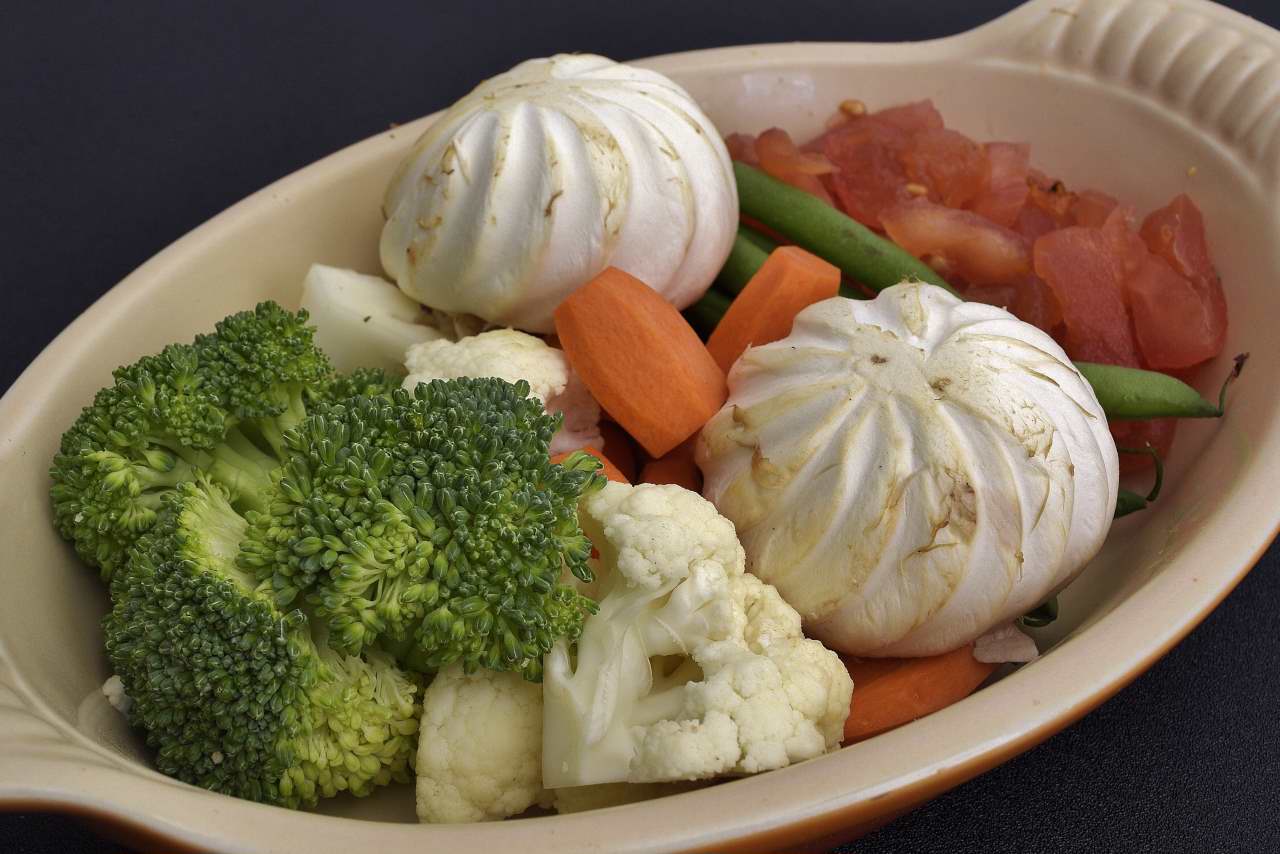
Vegetables Bouquetiere:
Have ready a container with one quart/1 liter of iced water for shocking the vegetables.
Bring one quart/one liter of salted water to a full boil. Add the carrots, potatoes, green beans, mushrooms, broccoli and cauliflower–not the tomatoes.
After thirty seconds, use a slotted spoon to transfer the broccoli to the ice water.
After another thirty seconds, transfer the cauliflower to the ice water.
After another minute, transfer the mushrooms to the ice water.
After another minute, transfer the beans to the ice water.
After another two minutes, transfer the potatoes to the iced water.
After another two minutes, transfer the carrots to the iced water. Set aside to cool. Drain well and refrigerate at 40 F/4 C until service.
Cut the tomato in half and use a paring knife to remove the seeds. Use a torch or oven broiler to scorch the tomato skins, allow to cool, and peel coarsely. A little bit of peel mixed in is acceptable. Dice the tomato and toss with a pinch of parsley, salt and pepper. Set aside.
Set the oven on warm–approximately 180 F/82 C. Melt 2 oz/60 g butter in the skillet, add all of the vegetables except the tomatoes and toss lightly with a pinch of salt. They do not need to be fully heated. Arrange the vegetables on two plates, leaving room for the slices of roast tenderloin. Add the tomatoes to the pan and toss lightly with the remaining butter. Use a spoon to place a little bit of the diced tomatoes (concassé) on the plates. Stage the plates into the oven. This will finish the heating process for the vegetables.
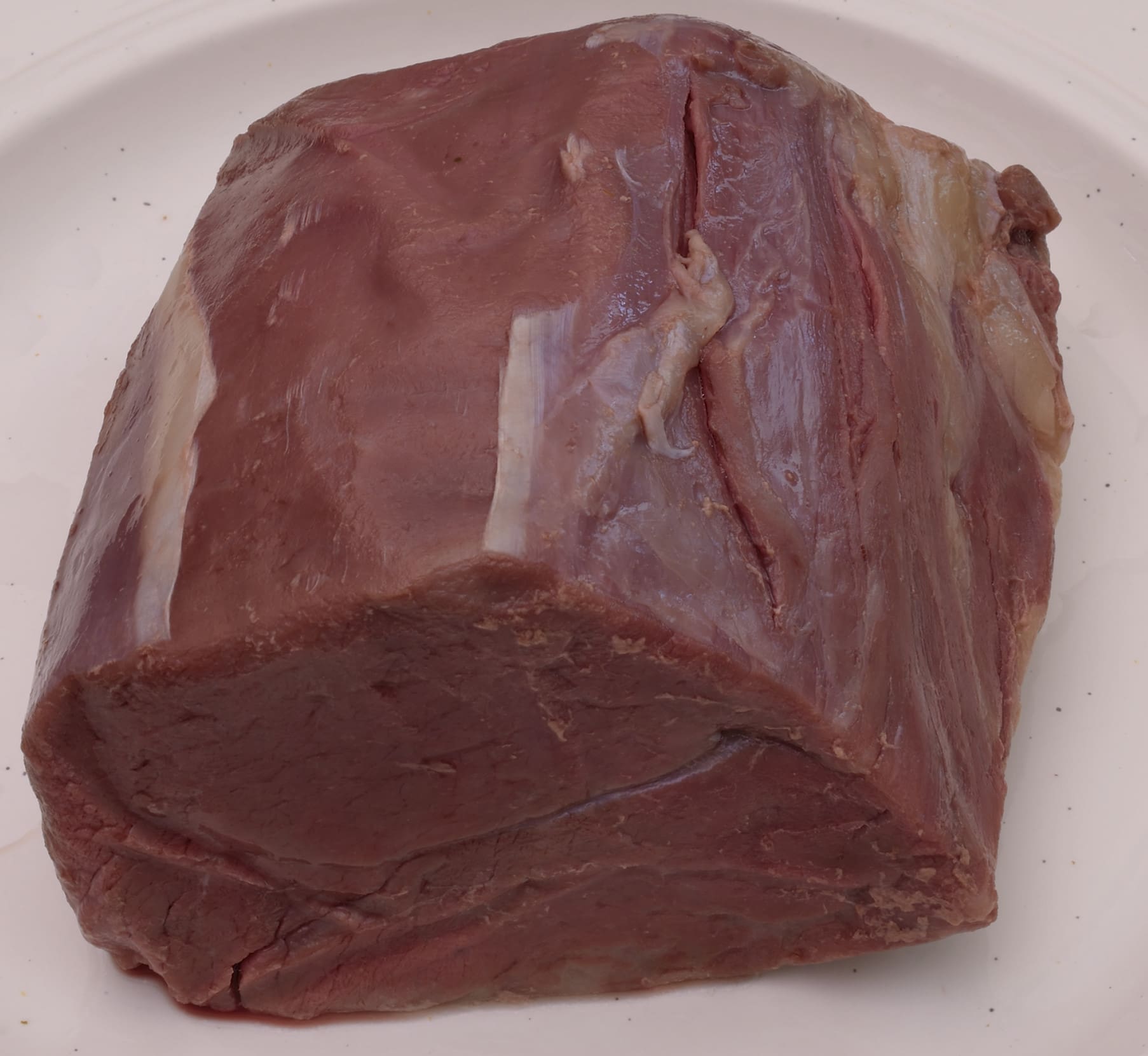
Remove the tenderloin from the bag and pat dry.
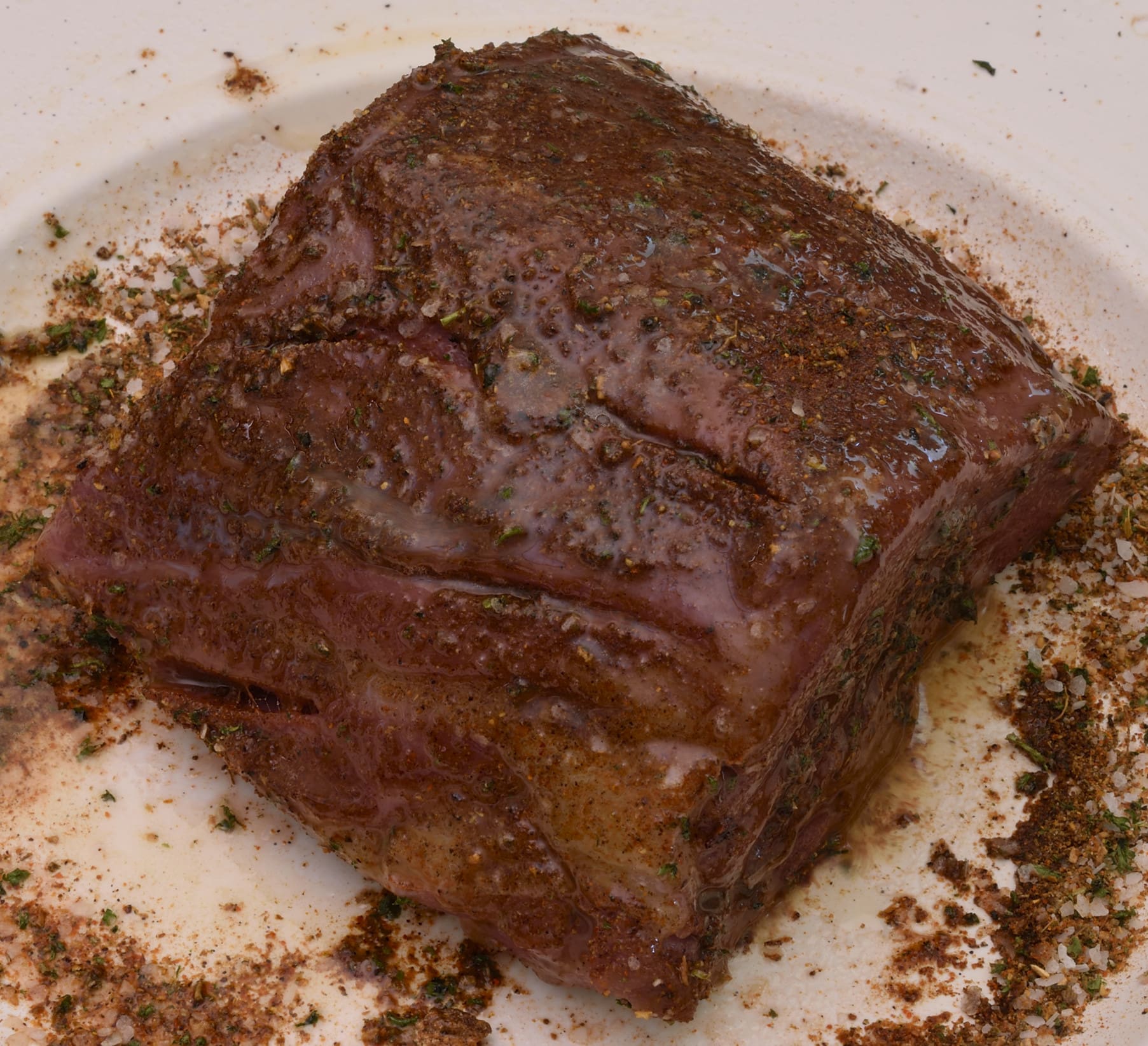
Sprinkle with the salt and pepper or your preferred seasonings and coat lightly with melted butter. Preheat the skillet to 400 F/200 C. Sear the roast on all sides until a brown crust forms–no more than 2 minutes. Set aside to rest for 5 minutes.

Begin slicing the roast–we are going to end up with four slices.

This roast was processed at 128 F/53 C. You can see how the appearance of doneness is uniform throughout the piece of meat. This is a characteristic of sous vide that is very difficult to accomplish using conventional methods of cooking. Sous vide does it for you!
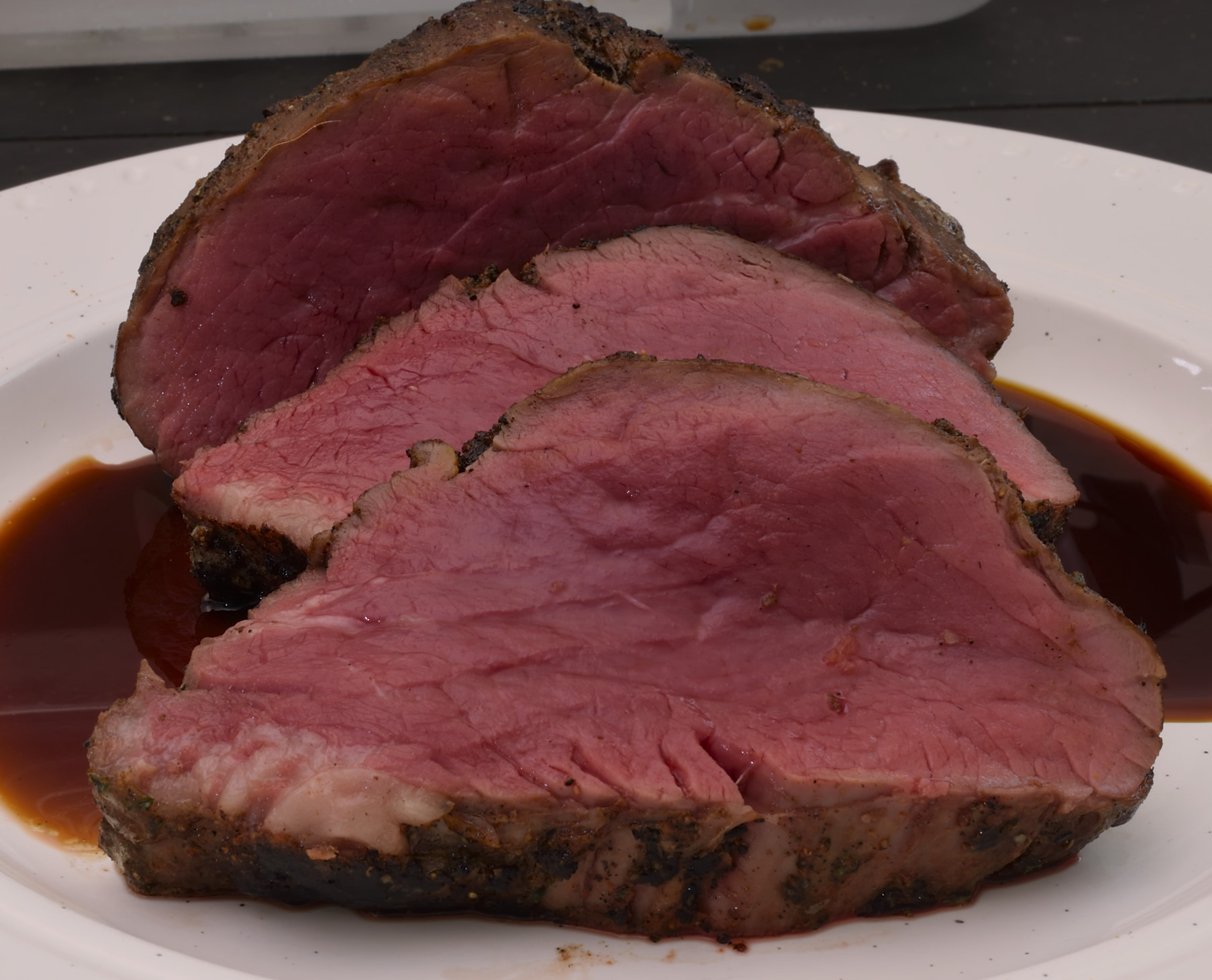
Use hot pads to remove the plates from the oven and drizzle a little bit of the sauce in the open space.
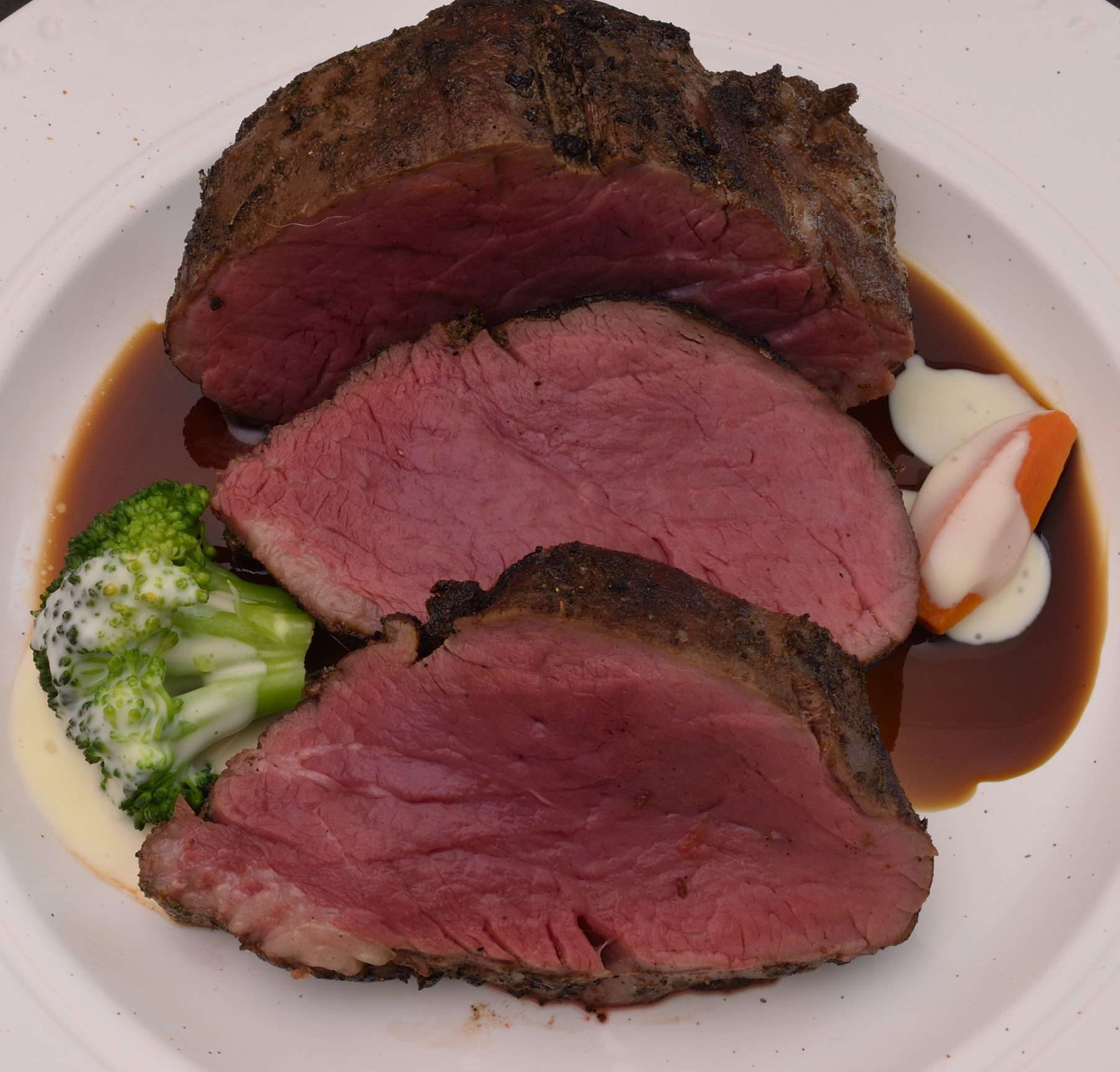
Arrange the slice of beef tenderloin on the plate, and dot with a little bit more sauce.
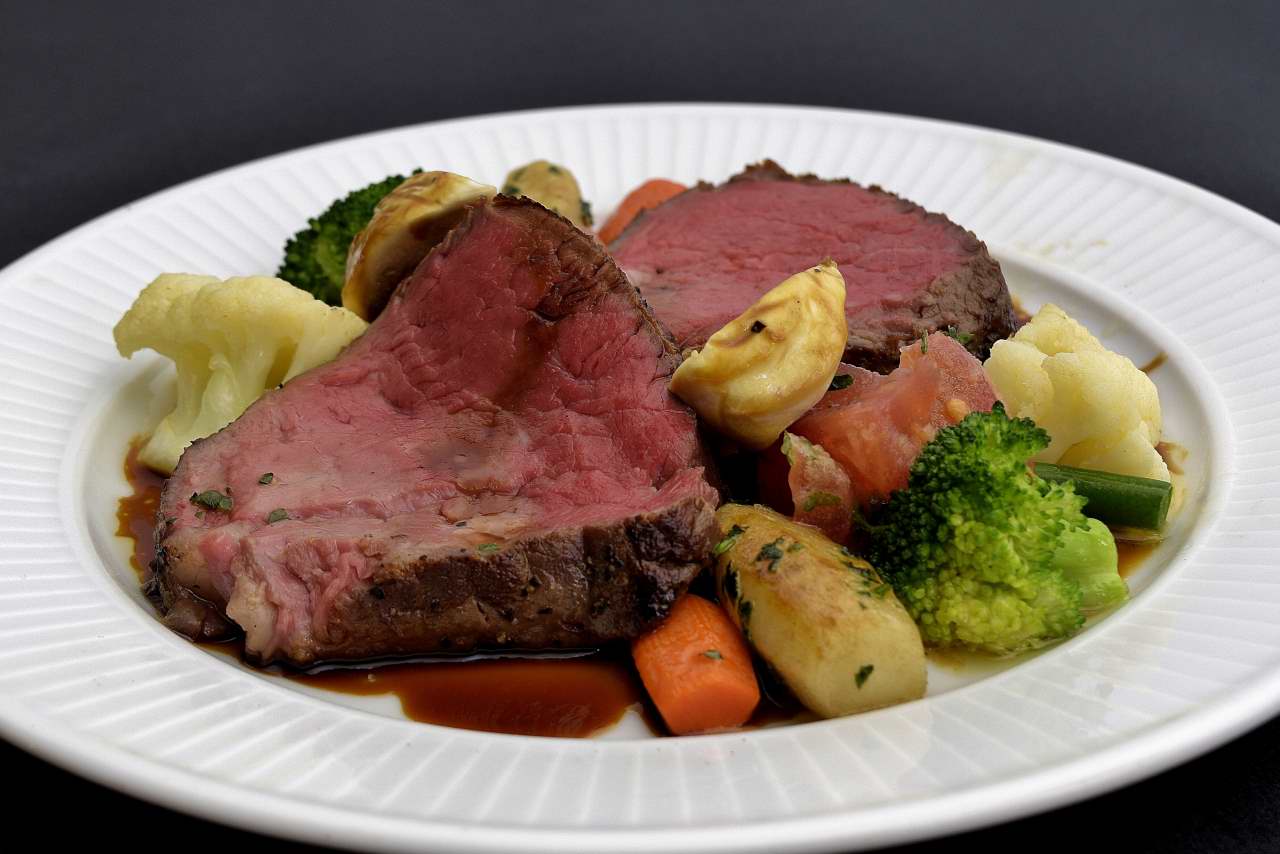
This dish is perfect for a romantic special occasion, and can also be prepared easily for groups of 8-10 people.

Enjoy!
Norm King
